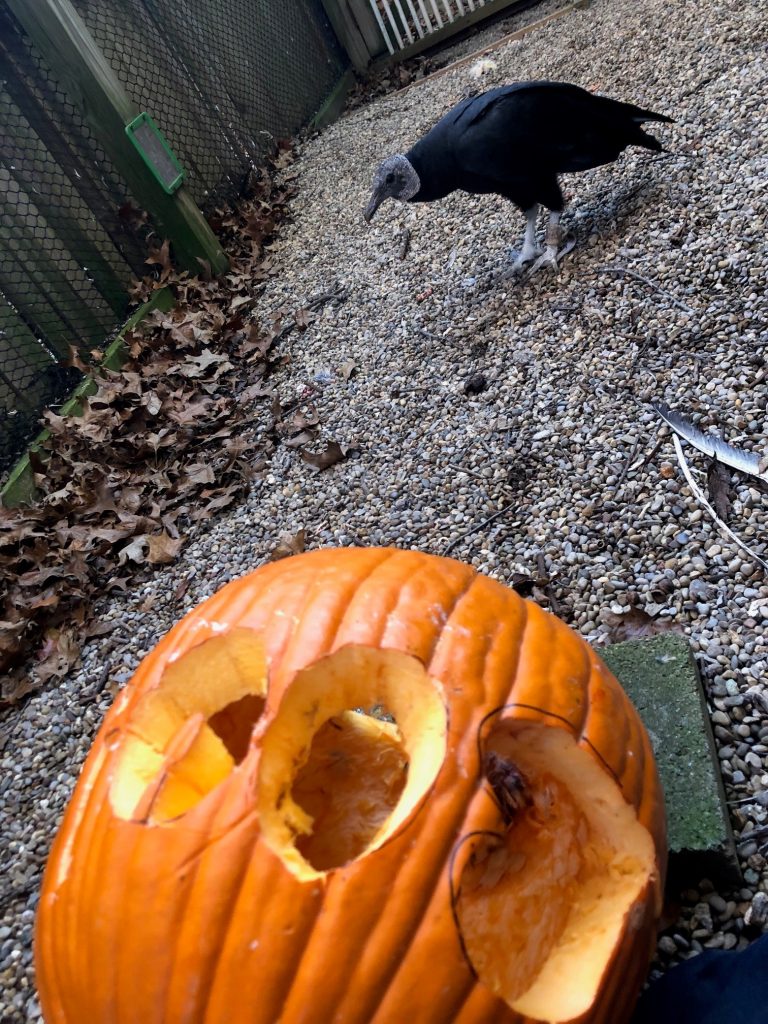Animal Enrichment Tales: Playtime with Pumpkins

If you’ve spent much time out in the parks, it’s likely that you’ve encountered one of Great Parks’ animal ambassadors. These animals have an extremely meaningful job and allow for up-close encounters that spark curiosity and connections for guests of all ages. Giving these hard-working animals enrichment opportunities is incredibly important. By allowing them to follow their instincts, solve problems and have new experiences, we can alleviate boredom, increase their quality of life and allow them to be comfortable and confident in situations that could otherwise be stressful. So, before tossing those leftover jack-o’-lanterns into the compost, we used them to create a unique opportunity for our birds of prey.


Curly the black vulture wasn’t sure what to think about the pumpkin at first. (Photos: Stephanie Morris)
This was the perfect activity for Curly, the black vulture, as his sharp beak can slice through the pumpkin and his featherless head is meant to reach into his food source. However, the large, orange object was new and he wasn’t quite sure about it at first.
Taking his cues, we slowly introduced the pumpkin and used food to create a positive experience. First, he was offered bits of food as I held the pumpkin. Once he was comfortable with that, I set the pumpkin on the ground and offered food when he came close. I continued moving food closer to the pumpkin until I could put the food inside and he would take it without hesitation. Although he never reached his entire head into the pumpkin, this safe and rewarding experience with a new object will help increase his curiosity of the world around him.
Next, we gave the barred owl, Puck, a turn. Because of his very limited vision, we didn’t put his food inside, but that didn’t stop him from interacting with the new object. He came down, investigated just a bit and then decided he’d rather go back to resting on his perch. Although brief, this interaction was important and will go a long way in allowing him to feel more comfortable when out and about in public.
Animal enrichment like this is just one of many ways we provide the best possible life for the animals that work with us. Since they’re unable to live in the wild for various reasons, giving them ways to exhibit their natural behavior relieves anxiety and creates a desire to explore the world around them. In addition, it allows us to build trust and create a relationship in which the birds actively want to engage.
Curly and Puck are not housed on public display, but can be seen in various programs throughout the year. Keep your eye on our calendar to find an opportunity to meet them up close and learn more about their natural history.
—
Stephanie Morris
Nature Interpreter, Farbach-Werner Nature Preserve

